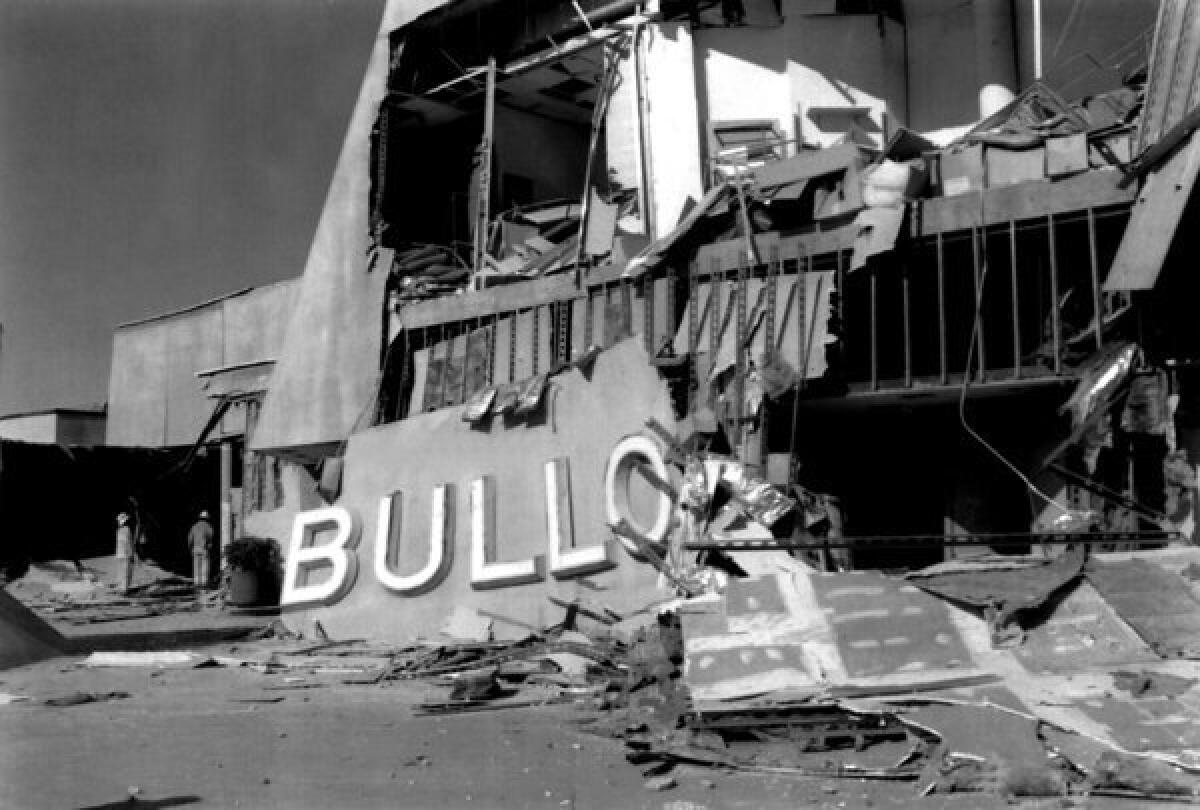Quake danger: UC, L.A. officials in standoff over records

Los Angeles officials and the University of California were locked in standoff Friday over whether the city would receive a list of older concrete buildings that may collapse during a major earthquake.
The list is considered a crucial first step in any effort by Mayor Eric Garcetti and other city officials to identify vulnerable concrete buildings, which experts say pose the greatest risk of deaths in a huge temblor.
IN DEPTH: The dangers of concrete buildings and earthquakes
City officials said they requested the data this week from a group of researchers who identified about 1,500 potentially at-risk concrete buildings in L.A. The academics sent a 2012 research paper outlining their studies but declined the cityâs request to provide the list of buildings, said Jeff Millman, a spokesman for Garcetti. The scientists had earlier told The Times they were willing to share the list with the city.
The University of California researchers are backed by a $3.6-million grant from the National Science Foundation to study the collapse potential of older nonductile concrete buildings during earthquakes.
In a statement Friday, UC said it is willing to talk to the city about the data, but âthose discussions have not yet occurred in anything other than in a very informal and preliminary manner.â
The researchers have long said they are reluctant to make the data public, fearing they could be exposed to legal liability from building owners because the data are far from definitive. Each building would have to be examined more thoroughly to determine whether it needed strengthening.
UC officials said the purpose of the research was for scientific study and not âa seismic assessment of specific buildings.â
âUltimately, the research team does plan to post confirmed and reliable publicly accessible data from the study on a public website,â UC added.
The dispute raises questions about whether the data will ever be made public and how researchers should handle senstitive material with a public interest.
Experts said researchers who accept public money are generally compelled to make their data public, though there are exceptions, including when research is of a sensitive nature, such as the names of academics who tested on animals, or if the research is incomplete.
âThe expectation is that all data will be made available after a reasonable length of time,â according to the National Science Foundationâs website. However, âwithin legal constraints, what constitutes reasonable data access will be determined by the community of interest through the process of peer review and program management.â
The NSF official overseeing the specific grant was not available this week for comment, spokeswoman Sarah Bates said.
Graham Fleming, vice chancellor for research at UC Berkeley, said that in some cases, âIt could be inappropriate, and it can even be unethicalâ for scientists to release the underlying data used in a research project.
âThere could be a significant disservice done to the public interest by releasing data that is subject to being easily misunderstood,â Fleming said. âThe university is ... open to exploring responsible ways of making the specific research data that supports the science useful to the community.â
In its statement, UC added it is willing to discuss with L.A. officials how the building data could be used by the city. Until now, the university said, L.A. has not âcommunicated specifically how it might use the inventory.â
ALSO:
No charges to be filed in death of Asiana Airlines crash survivor
Juvenile arrested in alleged sexual assault on Culver City Metro line
LAX dry ice bomb suspect took material to protect dog, lawyer says
More to Read
Sign up for Essential California
The most important California stories and recommendations in your inbox every morning.
You may occasionally receive promotional content from the Los Angeles Times.













